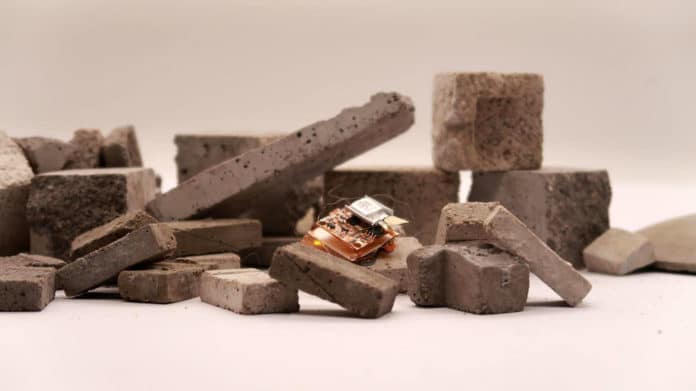Modeling the brains of insects could be the key to the design of automated robots that have learning and navigation skills like insects. This is why researchers always look to nature to equip their robots with the skills that insects possess. We have reported before on many insect-inspired robots, including cockroach-inspired microrobots and bee-size robots.
Climbing vertical walls and even walking upside down on the ceiling with the help of specialized sticky footpads: many insects and spiders have an incredible ability to maneuver in a way that is impossible for large mammals. Now, engineers at the University of California, Berkeley, have used the principle behind these footpads to create an insect-sized robot that has the ability to traverse complex terrain and quickly avoid unexpected obstacles. The principle, called electrostatic adhesion, makes for a very agile robot that can swerve and pivot with impressive speed and the agility of a cheetah.
The robot is made of a thin, layered material that can bend and contract when an electrical voltage is applied.
In 2019, the team first demonstrated the material using a cockroach-sized robot that could move over a flat surface at 20 body lengths per second, or about 1.5 miles per hour, which was the fastest relative speed of any insect-sized robot.
Now, the team has added two electrostatic footpads to the robot and then applied a voltage to either of the footpads to increase the electrostatic force between the footpad and the surface. This caused the footpad to stick more firmly to the surface while forcing the rest of the robot to rotate around the foot. This allowed the operators to better control the robot despite it moving very fast.
“Our original robot could move very, very fast, but we could not really control whether the robot went left or right, and a lot of the time it would move randomly, because if there was a slight difference in the manufacturing process – if the robot was not symmetrical – it would veer to one side,” said Liwei Lin, a professor of mechanical engineering at UC Berkeley. “In this work, the major innovation was adding these footpads that allow it to make very, very fast turns.”
Eventually, robots like this could be used to venture into dangerous areas during search and rescue operations or to enter other dangerous environments, such as gas leak investigations. An advantage of being so small is that the robot can withstand considerable crushing forces. The researchers say its design means it could even survive the stomp of a 120-pound human.
To demonstrate the insect-sized robot’s agility, the research team filmed the robot navigating Lego mazes. The team demonstrated most of the robot’s skills while it was “tethered,” or powered and controlled through a small electrical wire. They also created an “untethered” version that can operate on battery power for up to 19 minutes and 31 meters while carrying a gas sensor.
“One of the biggest challenges today is making smaller scale robots that maintain the power and control of bigger robots,” Lin said. “With larger-scale robots, you can include a big battery and a control system, no problem. But when you try to shrink everything down to a smaller and smaller scale, the weight of those elements becomes difficult for the robot to carry, and the robot generally moves very slowly. Our robot is very fast, quite strong, and requires very little power, allowing it to carry sensors and electronics while also carrying a battery.“
